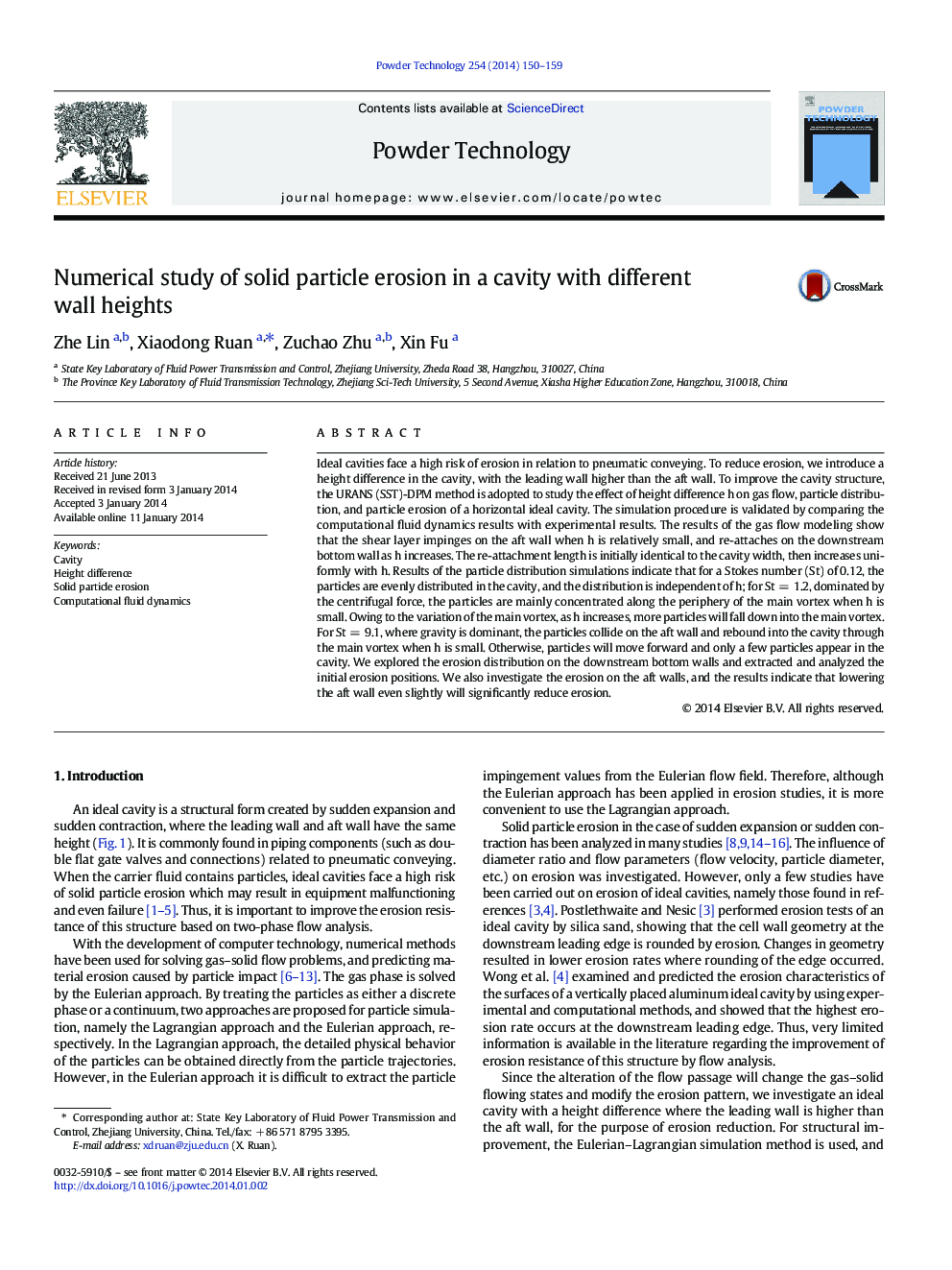| Article ID | Journal | Published Year | Pages | File Type |
|---|---|---|---|---|
| 236239 | Powder Technology | 2014 | 10 Pages |
•Height difference is introduced into a horizontal ideal cavity to reduce erosion.•URANS SST-DPM method is used to investigate gas–solid flows and particle erosions.•Height difference has significant effect on gas flow and particle distributions.•Erosion distribution of downstream bottom wall changes with height difference.•Small height difference leads to significant erosion reduction of the aft wall.
Ideal cavities face a high risk of erosion in relation to pneumatic conveying. To reduce erosion, we introduce a height difference in the cavity, with the leading wall higher than the aft wall. To improve the cavity structure, the URANS (SST)-DPM method is adopted to study the effect of height difference h on gas flow, particle distribution, and particle erosion of a horizontal ideal cavity. The simulation procedure is validated by comparing the computational fluid dynamics results with experimental results. The results of the gas flow modeling show that the shear layer impinges on the aft wall when h is relatively small, and re-attaches on the downstream bottom wall as h increases. The re-attachment length is initially identical to the cavity width, then increases uniformly with h. Results of the particle distribution simulations indicate that for a Stokes number (St) of 0.12, the particles are evenly distributed in the cavity, and the distribution is independent of h; for St = 1.2, dominated by the centrifugal force, the particles are mainly concentrated along the periphery of the main vortex when h is small. Owing to the variation of the main vortex, as h increases, more particles will fall down into the main vortex. For St = 9.1, where gravity is dominant, the particles collide on the aft wall and rebound into the cavity through the main vortex when h is small. Otherwise, particles will move forward and only a few particles appear in the cavity. We explored the erosion distribution on the downstream bottom walls and extracted and analyzed the initial erosion positions. We also investigate the erosion on the aft walls, and the results indicate that lowering the aft wall even slightly will significantly reduce erosion.
Graphical abstractFigure optionsDownload full-size imageDownload as PowerPoint slide
